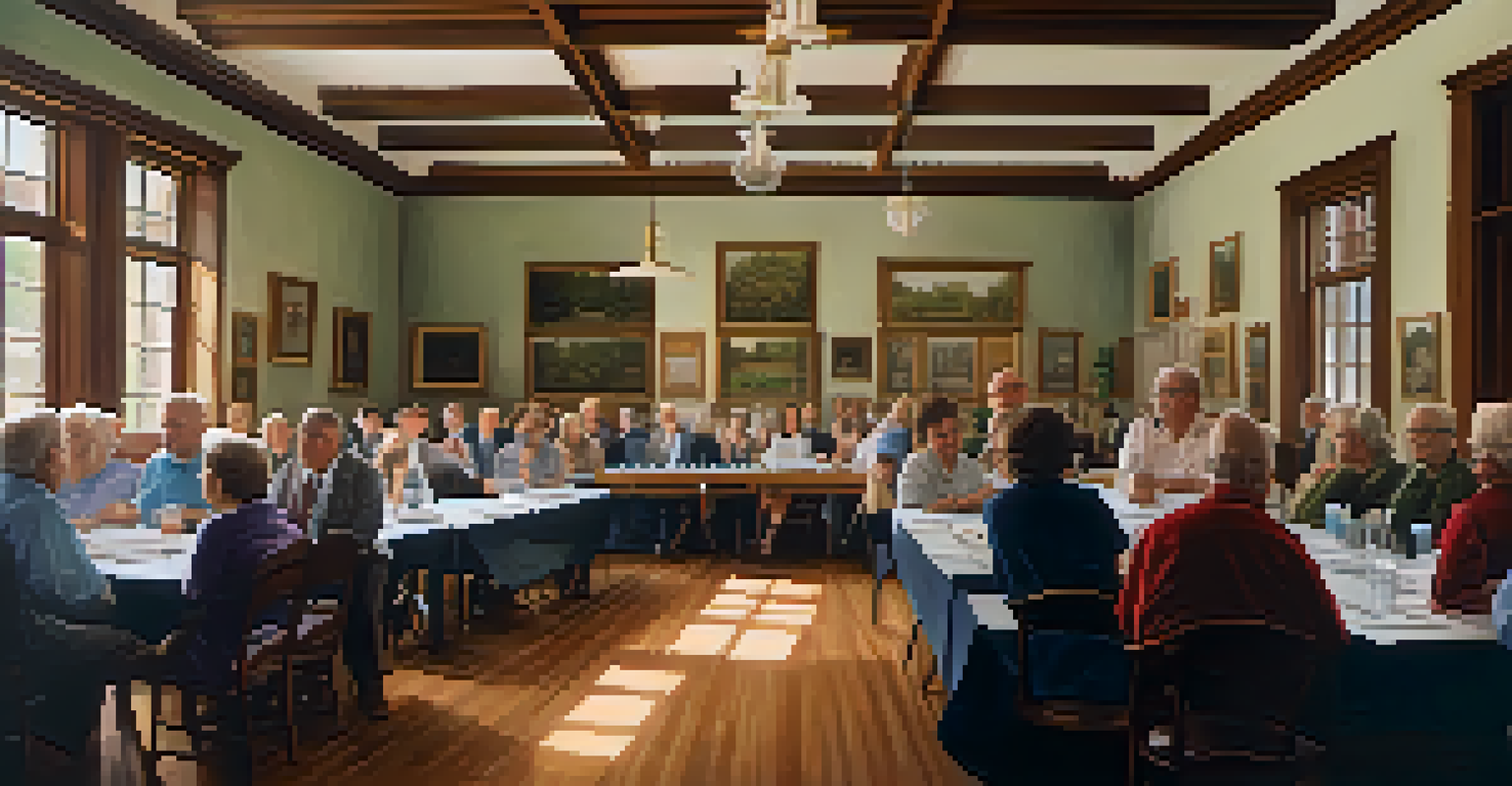Understanding the Historic Preservation Process Step by Step

What is Historic Preservation and Why It Matters
Historic preservation is the practice of protecting and maintaining buildings, landscapes, and artifacts that hold historical significance. This process not only honors our past but also enriches our cultural identity. By preserving historical sites, we create a sense of place that connects us to previous generations.
Preservation is not just about saving buildings; it's about saving the stories they tell.
Preservation can also have economic benefits, as restored sites often attract tourism and promote local businesses. Communities that value their history tend to foster pride and cohesion among their residents. This sense of belonging is crucial for social stability and community development.
Moreover, historic preservation contributes to sustainable development. By revitalizing existing structures instead of tearing them down, we reduce waste and conserve resources. It's a win-win for both our environment and our heritage.
Identifying Historic Properties and Their Significance
The first step in the preservation process is identifying properties that are historically significant. This could be anything from a charming Victorian house to a historic battlefield. Understanding the history and context of these structures is essential for effective preservation.

One useful method for identifying significant properties is through local surveys and inventories. These assessments help determine the architectural style, historical context, and current condition of the properties. Engaging local historians and residents can also provide invaluable insights.
Historic Preservation Enriches Culture
Preserving historical sites enhances our cultural identity and fosters community pride.
Once identified, these properties can be evaluated for their eligibility for protection under local, state, or national historic registers. This recognition not only helps in preserving the properties but also opens up opportunities for funding and grants.
Legal Framework and Regulations for Preservation
Understanding the legal framework surrounding historic preservation is crucial. Laws and regulations can vary widely, so it’s important to familiarize yourself with local, state, and federal guidelines. For instance, the National Historic Preservation Act provides a foundation for preserving significant sites across America.
Heritage is our legacy from the past, what we live with today, and what we pass on to future generations.
Local ordinances may also dictate how properties can be altered or maintained. These regulations ensure that any changes made to historic properties are in keeping with their character and significance. Failure to comply can result in fines or loss of funding.
Additionally, property owners might be eligible for tax credits or grants if they adhere to preservation standards. Knowing these legal frameworks not only protects the property but also empowers owners to make informed decisions.
The Role of Community in Preservation Efforts
Community involvement is at the heart of successful preservation efforts. Engaging local residents fosters a sense of ownership and pride in historical sites. This communal approach can lead to stronger advocacy for preserving local landmarks.
Public meetings and workshops can be effective ways to gather input and educate the community about the importance of preservation. These gatherings allow residents to voice their concerns and share their stories, making the process more inclusive.
Community Engagement is Key
Active involvement from local residents can strengthen advocacy and ensure successful preservation efforts.
Moreover, partnerships between local governments, non-profits, and community organizations can amplify preservation efforts. Collaborative initiatives often yield greater resources and support, ultimately leading to more successful outcomes.
Funding and Financial Incentives for Preservation
Funding is often a significant hurdle in the preservation process. Fortunately, there are various financial incentives available, including grants, tax credits, and low-interest loans. These resources can help offset the costs of restoration and maintenance.
Federal programs, such as the Historic Preservation Tax Incentives program, can provide substantial financial relief to property owners. State and local governments may also offer their own funding opportunities tailored to specific preservation projects.
Additionally, fundraising initiatives and community partnerships can supplement available funding. By pooling resources, communities can tackle larger projects that might otherwise be unfeasible.
Planning and Developing a Preservation Strategy
Creating a preservation strategy is essential for guiding efforts effectively. This plan should outline the goals, timeline, and budget for preservation projects. A well-thought-out strategy can help ensure that all stakeholders are on the same page.
Involving various community members, including historians, architects, and local leaders, can enhance the strategy's effectiveness. Their diverse perspectives can lead to innovative solutions and more comprehensive approaches to preservation.
Funding Supports Preservation Projects
Various financial incentives, including grants and tax credits, help offset the costs of restoring historic properties.
Regularly reviewing and updating the strategy is also important, as community needs and resources may evolve over time. A flexible strategy can adapt to these changes, ensuring continued relevance and effectiveness.
Implementing Preservation Projects and Best Practices
Once a strategy is in place, it's time to roll up your sleeves and implement preservation projects. This phase often involves a combination of physical restoration and community education. Best practices should be followed to ensure that the integrity of historic properties is maintained.
Utilizing skilled craftsmen and preservation specialists can make a significant difference in the quality of work. These professionals understand the unique challenges posed by historic materials and techniques, ensuring that restorations are both authentic and durable.

Moreover, documenting the preservation process is vital for future reference. Keeping records of the methods used and materials sourced can serve as a valuable resource for future projects, contributing to the broader knowledge of historic preservation.
Celebrating Achievements and Sustaining Preservation Efforts
Celebrating the achievements of preservation efforts is crucial for maintaining momentum. Hosting events, such as open houses or community tours, can highlight the restored properties and educate the public about their significance. This recognition fosters a shared sense of accomplishment among community members.
Sustaining preservation efforts requires ongoing commitment and resources. Establishing a preservation committee or non-profit organization can help maintain focus and direction. Regular meetings and outreach can keep the community engaged and informed.
Lastly, continuous education and advocacy are essential. By sharing success stories and best practices, communities can inspire others to value and protect their own historic treasures. The journey of preservation is ongoing, and collective efforts can lead to lasting change.